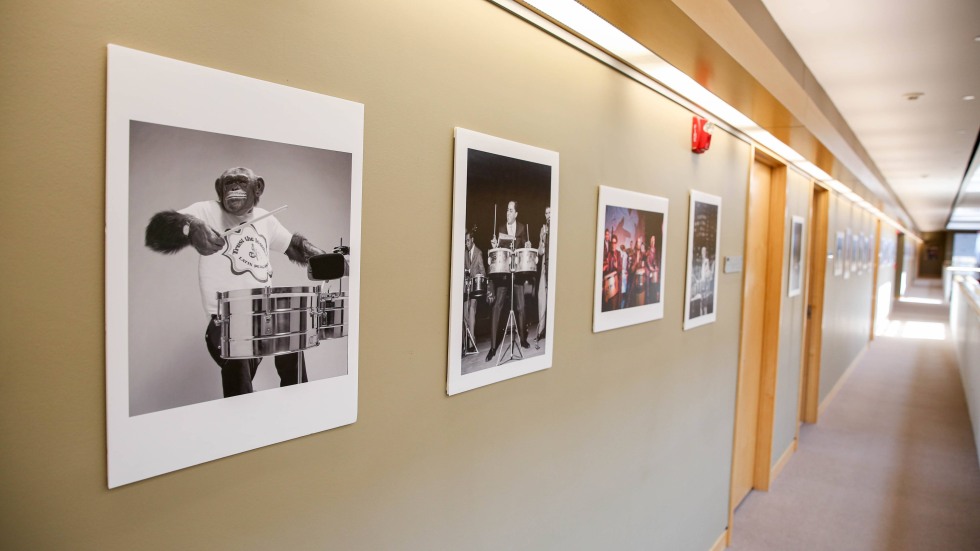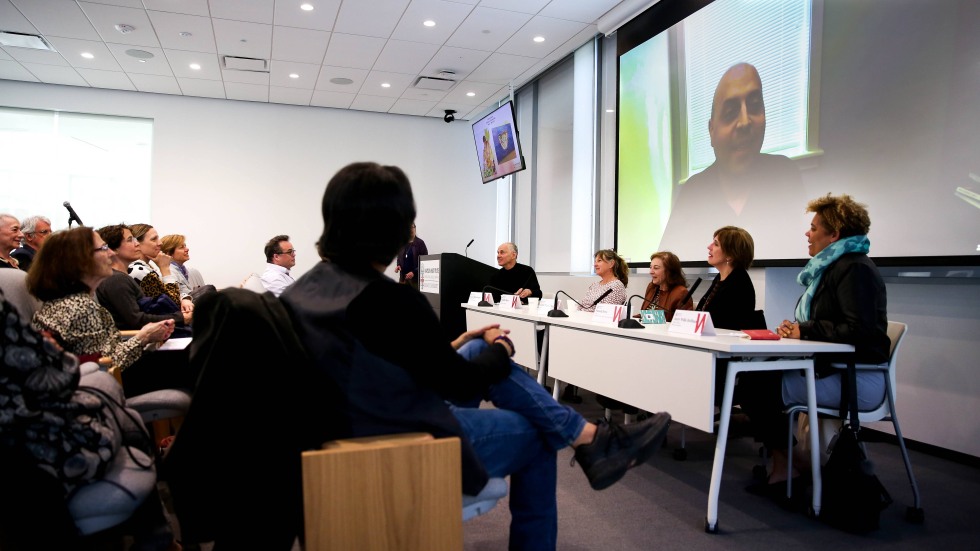PROVIDENCE, R.I. [Brown University] — Ten years ago, then-director Richard M. Locke gazed down the corridors of Brown University’s Watson Institute for International and Public Affairs and knew they needed a touch more color and culture.
“[He] saw three long hallways with bare walls and came to me and said, ‘Could you please get some art on the walls?’” said Sarah Baldwin, who served as Watson Institute communications director at the time.
That began a decade-long effort to integrate art into the fabric of the Watson Institute. Baldwin convened a committee of faculty, students and staff to find and exhibit artwork that would not only amplify the institute’s mission to promote a just and peaceful world, but also draw in people from the Brown and Providence communities who might not otherwise come to its buildings on Thayer and Brook streets.
Thanks to the committee’s work, since 2013, visitors to the institute have taken in more than 40 installations of thought-provoking art by creators from within the Brown community, from the Providence area and from across the globe. Exhibitions have encompassed a wide array of artistic media, including paintings, photographs, digital art, comics and documentary films.
Late in April, Art at Watson celebrated its 10th anniversary with "Art at Watson, Art in the World," a discussion featuring previously exhibited artists and curators.
Art at Watson’s first exhibition featured a lifetime of paintings and drawings by Abbott Gleason, the institute’s former associate director — including some works he created after developing Parkinson’s disease. Subsequent exhibitions have explored the effects of a Tanzania plane crash on one family, the toll plastic waste has exacted on birds in the Pacific Northwest, and the connections between the Bollywood film industry and the societal expectations of women in India, among many other international topics. Many spotlight cross-disciplinary scholarship that tackles complex societal issues such as immigration, economic inequality and warfare.

